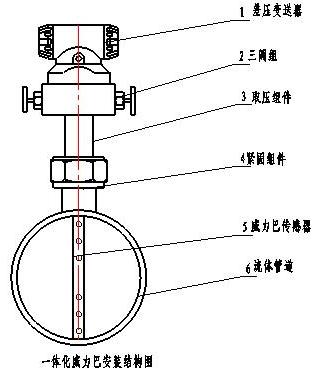Install a throttle (or similar device) in a circular pipe with a smaller diameter than the pipe, as shown in the following picture:

When the fluid filling the pipeline passes through the throttle parts in the pipeline, due to the sudden reduction of the flow cross section, the flow beam will form a local contraction at the throttle parts, and the flow rate will increase. According to the law of conservation of energy, the dynamic pressure energy and static pressure can be converted under certain conditions. The result of the acceleration of flow speed makes the dynamic pressure increase and the static pressure decrease, which results in the static pressure difference before and after the throttle parts. The larger the flow rate of the fluid, the greater the flow rate will be generated. The larger the static pressure difference is, the larger the flow rate can be measured by the static pressure difference. The instrument which uses this principle or similar original measurement to measure the flow rate can be called differential pressure flowmeter. This method is based on the flow continuity equation (mass conservation law) and Bernoulli equation (energy conservation law). The pressure difference is not only related to the flow rate, but also to many other factors, such as throttling device type, physical properties of fluid (density, viscosity, etc.) and Reynolds number.
Differential pressure flowmeter is a kind of flowmeter which has a wide range of applications. It is also the most mature and commonly used flowmeter in industrial production. It occupies the first place in all kinds of flowmeters.
Differential pressure flowmeter is generally composed of throttle device, pressure diversion device, three valve groups, differential pressure transmitter and display instrument. The throttling device is used to generate the hydrostatic pressure difference. The pressure diversion device introduces the high and low hydrostatic pressure into the differential pressure transmitter. The three valve groups play the function of pressure protection and easy installation and disassembly. The differential pressure transmitter transforms the differential pressure signal into a standard electrical signal (such as 4-20mA) and transmits it to the secondary meter for processing and calculation. The display instrument (secondary table) transmits the differential pressure transmitter. The standard electric signal and the compensation signal transmitted by other instruments (such as temperature and pressure compensation signal, only the gas flow is compensated by temperature and pressure) are calculated and calculated. The instantaneous flow and cumulative flow are displayed, and the flow signal is transmitted and controlled remotely.
The throttling device of differential pressure flowmeter can be divided into throttling type, dynamic pressure head type, centrifugal type, hydraulic resistance type and jet type according to its working principle. Among them: 1) throttle type is based on the principle that part of pressure energy is transformed into kinetic energy to generate static differential pressure by means of throttle orifice, which is the main variety of differential pressure flowmeter; 2) dynamic pressure head type is based on the principle that dynamic pressure is transformed into static pressure, such as equalizing tube flowmeter and pitot tube flowmeter; 3) centrifugal type is based on the principle that bending tube or annular tube produces centrifugal force. Pressure difference works, such as elbow flowmeter; 4) Hydraulic resistance works according to the principle of pressure difference caused by fluid resistance, and its detection parts are capillary bundles, also known as laminar flowmeter; 5) Jet type works according to the principle of pressure difference caused by fluid jet impact, such as jet type differential flowmeter.
The throttling device of differential pressure flowmeter can be divided into:
1) Standard throttling device: including standard orifice plate, standard nozzle, classical venturi tube and Venturi nozzle;
2) Low Reynolds number throttling devices, such as 1/4 circular orifice plate, conical inlet orifice plate and double orifice plate;
3) Throttle devices for dirty fluids, such as circular orifice plate, eccentric orifice plate and wedge, etc.
4) Low-voltage loss throttling devices, such as Doyle tube, Rolls tube, general Venturi tube, elbow tube and annular tube, etc.
5) Small diameter throttling devices: such as internal orifice plate and integrated differential pressure flow transmitter, etc.
6) Wide range throttling devices, such as linear orifices, etc.
7) Critical flow throttling devices, such as critical flow Venturi tube, etc.
I. Orifice Flowmeter
Orifice plate flowmeter can be used to measure the flow of gas, steam, liquid and natural gas. It is widely used in process control and measurement in petroleum, chemical industry, metallurgy, electric power, heating, water supply and other fields.
Parameters:
Nominal diameter: 15 mm < DN < 1200 mm
Nominal pressure: PN < 10MPa
Working temperature: - 50 < T < 550 Temperature
Range Ratio: 1:10, 1:15
Accuracy: 0.5, 1.0
II. Integrated Differential Pressure Flowmeter
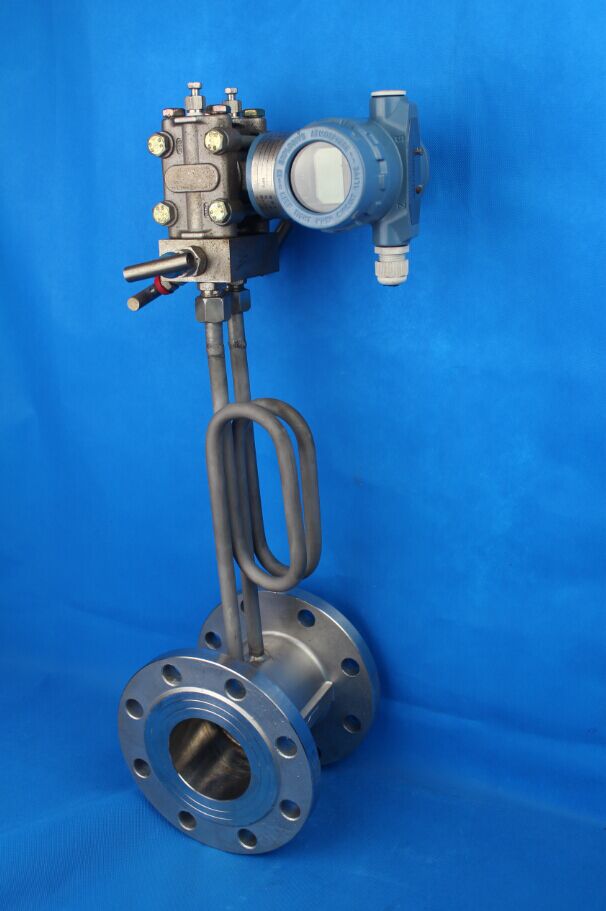
Integrative differential pressure flowmeter is an effective combination of standard or non-standard throttling device and differential pressure transmitter. Its measuring principle is the same as that of standard and non-standard throttling device. It is a flowmeter with high measuring accuracy, convenient installation, low operation and maintenance cost and excellent economy. Integrative differential pressure flowmeter is composed of standard or non-standard throttling device, three valve groups, differential pressure transmitter, installation and connecting accessories. It can be used for gas, steam and other media to select and match multi-parameter differential pressure transmitter. This flowmeter can automatically compensate the temperature and pressure of the output signal without additional pressure and temperature measuring points. Accuracy.
Integrative differential pressure flowmeter reduces the phenomenon of differential pressure distortion because it does not need pressure piping, so it has higher accuracy than split differential pressure flowmeter. For the differential pressure flowmeter which needs real flow calibration, the accuracy of the system can be improved by 0.3% due to the flow calibration of the whole device. The integrated differential pressure flowmeter only needs to be flanged or welded directly with the phenomenon pipeline, and the current signal of the differential pressure transmitter can be directly drawn out without additional laying of the diversion pipeline and installing the differential pressure transmitter. For measuring gas or steam flow, no additional temperature and pressure measuring elements need to be installed, which greatly improves the installation progress.
Different types of throttling devices can be used for primary components. As long as suitable integrated differential flowmeters are selected for different operating conditions, accurate flow can be achieved under any complex working conditions.
III. Nozzle Flowmeter
1) ISA1932 nozzle: It has the characteristics of high temperature and high pressure resistance, shock resistance, long service life, large measurement range and high measurement accuracy. It is suitable for the flow measurement of high temperature and high pressure steam, heat network pipeline and high flow rate in power plants. Standard nozzles are designed and manufactured according to GB/T 224-93 and tested according to JJG640-94, without real-flow calibration.
Main technical indicators:
Nominal diameter: 50mm < DN < 500mm.
Nominal pressure: PN < 32MPa.
Reynolds number range: when 0.30 < beta < 0.44, 70000 < ReD < 107; when 0.44 < beta < 0.8, 2000 < ReD < 10.
Aperture ratio: 0.30 < beta < 0.80
Accuracy: 1.0
Structure Form of ISA1932 Nozzle
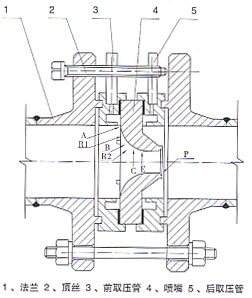
ISA1932 standard nozzle consists of an inlet contraction part consisting of an inlet plane part A perpendicular to the axis, a circular curved surface B and C, a cylindrical throat E, and a protective groove P required to prevent edge operation. The upstream pressure tap adopts angular pressure tap, while the downstream pressure tap can be set at an angular pressure tap or at a far downstream position.
2) Long diameter nozzle. Mainly used in power industry high pressure or high temperature and high pressure occasions, the main steam, main feed water or desuperheating water with installed capacity of more than 50 MW adopt this typical design form, which has the characteristics of low pressure loss and long service life. Long-diameter nozzle is designed and manufactured according to ASME PTC6-1966 standard. It is a standardized high-precision flow measurement device. It is mainly used in power plant steam turbine performance test or in occasions where measurement accuracy is particularly strict. The accuracy of long-diameter nozzle without flow calibration is registered at 0.5 level, and after calibration it can reach 0.25 level.
IV. Venturi Tube Flowmeter
The development of V-cone flowmeter is a qualitative leap in differential pressure flow measurement. It uses the throttling effect of V-cone in the flow field to measure the flow rate by measuring the pressure difference between upstream and downstream. Compared with the ordinary throttle, it changes the throttle layout from the central orifice throttle to the circular throttle.
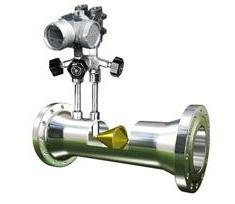
Technical characteristics of V-cone flowmeter:
1. Low installation requirements: the first 0-3D straight pipe and the last 0-1D straight pipe;
2. Width of measurement range ratio: usually 10:1, the best choice of appropriate parameters can be 50:1;
3. Low pressure loss: the same beta value, the pressure loss is pore plate 1/3-1/5;
4. Wear resistance: After the streamlined cone is throttled, the vacuum layer effect is produced on the surface of the cone, which makes the cone not easy to wear.
5. No clogging, no adhesion: The conical thorough purge design avoids the retention of residue, condensate or particles in the fluid;
6. Good long-term stability: the beta value can remain unchanged for a long time and ensure long-term accurate measurement;
7. High accuracy: 0.52 grade;
8. Good repeatability: better than 0.122%;
9. Signal stability: "signal fluctuation" is 1/10 of orifice plate;
10. Wide range of β value: The unique geometry of V-cone flow sensor allows a wide range of beta value.
11. Wide caliber range: DN25-DN2000;
12. Measurable medium of high temperature and high pressure: working temperature up to 850 C, maximum pressure 40 MPa;
13. Measurable dirty media (coke oven gas, blast furnace gas, raw oil, residue, etc.);
14. Measurable gas-liquid two-phase media (moisture, condensate, etc.).
Main technical parameters of V-cone flowmeter
1. Accuracy class: 0.5 (Differential Pressure Flow Transmitter Accuracy should be higher than 0.2, including 0.2), (beta: 0.45-0.85, when beta < 0.55, range ratio 4:1, accuracy: < 0.30)
2. Repeatability: 0.11%
3. Operating pressure: 0-40MPa (multiple pressure levels are available)
4. Operating temperature: -40-851 degree C ambient temperature: -42-65 degree C,
5. Installation requirements of straight pipe section: front 0-3D straight pipe section, rear 0-1D straight pipe section
6. Width of measurement range ratio: usually 10:1, the appropriate parameters can reach 50:1.
7. Low Pressure Loss: With the same beta value, the pressure loss is 1/3-1/5 of the orifice plate 1.
8. Diameter from DN25 to DN2000
VI. Wedge Flowmeter
Wedge flowmeter is a new type of flowmeter which has been gradually applied since 1980's. Its detection piece is a V-shaped wedge (also known as wedge throttle). Its smooth top angle is downward, which is conducive to the smooth passage of liquid containing suspended particles or viscous liquid without stagnation on the upstream side of the throttle. Therefore, it is especially suitable for measuring volume flow and mass flow in petroleum, chemical and other industries.
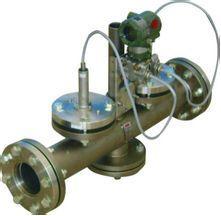
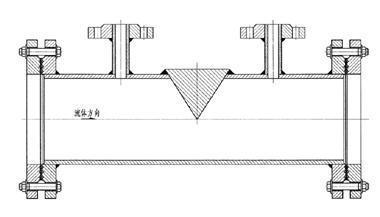
Main Features
With good repeatability and high accuracy, the accuracy of the calibrated Wedge Flowmeter is up to 0.5 grade.
Self-cleaning ability and no stagnation zone.
Wear resistance, long life and high reliability;
Permanent pressure loss is smaller than orifice plate.
Integral structure, field installation does not need to install pressure guide pipeline, directly connected with the pipeline threads or flanges. The construction is time-saving, labor-saving and easy to maintain.
Suitable for medium measurement with high viscosity, low Reynolds number, suspended particles or bubbles.
The measurement accuracy is not affected and limited by the dielectric constant of fluid medium.
Wedge-shaped parts have special structure design, diversion function and anti-blockage.
Compensate for the change of fluid viscosity, temperature and density.
Anti-vibration, anti-impact, anti-fouling, anti-corrosion;
Two-way flow measurement function.
The measurement accuracy is high.
The wedge flowmeter has the advantages of simple structure, firm structure, high reliability, convenient installation and low operation and maintenance cost.
No moving parts, no wear and tear, long-term use does not require re-calibration.
Technical Parameter
The accuracy of measurement: 1.0%~1.5%
The minimum flow rate is 0.01m/s.
Service life: up to 10 years.
Range Ratio:≥10:1
Reynolds number coefficient range of use: the lower limit is 300, the upper limit is more than 1 x 106.
Measuring the upper limit of liquid viscosity: 500MPa. S.
Working pressure range: - 0.1-6.4 MPa.
Working temperature range: - 50 ~ 400℃.
Other Performance
Suitable for measuring slurry, coal tar pitch, coal water suspension and other high viscosity fluids.
Under very low Reynolds number (even as low as Re=500), the square root relationship between flow rate and differential pressure can still be maintained. The minimum Reynolds number of orifice flowmeter is much larger than that of wedge flowmeter.
The separately calibrated wedge flowmeter has a high measurement accuracy (up to 0.5%) and the uncalibrated wedge flowmeter has a precision of about 3%.
The utility model has the advantages of simple structure, convenient installation, use and maintenance;
Measurable corrosive medium, because the differential pressure measurement is a diaphragm-type double flange differential pressure transmitter, corrosive medium can not enter the guide pipe and differential pressure transmitter, so as to use corrosion-resistant materials to process wedge throttle parts, the instrument can measure corrosive medium.
Ⅶ.Elbow Flowmeter
Like traditional orifice flowmeter, elbow flowmeter belongs to the category of differential pressure flowmeter, but the way of differential pressure produced by elbow flowmeter is different from orifice flowmeter. Orifice plate generates differential pressure by the principle of fluid scaling, while elbow sensor generates differential pressure by the principle of fluid inertia. The elbow flowmeter not only inherits the advantages of traditional differential pressure flowmeter, such as simple structure, stable performance and accurate measurement, but also overcomes the disadvantages of differential pressure flowmeter, such as large pressure loss, easy blockage and difficult maintenance.
Technical Parameter
The measurement accuracy is high and the repeatability is good: the measurement accuracy of elbow flowmeter system is as high as 0.5-1.5 grade, and the repeatability accuracy is as high as 0.2%.
No additional pressure loss. The elbow sensor does not have any inserts or throttles, so it will not cause additional pressure loss to the measured fluid in the process of measuring flow rate. It can save power consumption and energy for fluid transportation.
Strong adaptability: The elbow sensor can be used normally in high temperature, high pressure, dust, vibration, humidity and other harsh environments.
Wide range: measuring range of velocity: liquid medium is 0.2-12 m/s, steam or gas medium is 5-160 m/s. Diameter range: 10-2000mm.
The requirements of straight pipe section are not strict: the first five (5D) and the second (2D) of straight pipe section can fully meet the requirements of use.
Long service life: elbow sensor has good temperature resistance, pressure resistance, corrosion resistance, wear resistance and vibration resistance, and is insensitive to micro-wear. The service life of the sensor after special processing is at least the same as that of the pipeline.
Easy installation, wear resistance, maintenance-free: Because the elbow sensor is insensitive to wear, it can be directly welded and installed on the pipeline. After one welding, there will be no leakage and other headache problems, which need not be maintained.
Ⅷ. Average Speed Tube Flowmeter (Wilba Flowmeter)
When the fluid flows through the probe, a high-pressure distribution area is generated in the front part of the probe, and the pressure in the high-pressure distribution area is slightly higher than the static pressure of the pipeline. According to the principle of Bernoulli equation, the velocity of fluid flowing through the probe is accelerated, and a low-pressure distribution area is created in the rear part of the probe. The pressure in the low-pressure distribution area is slightly lower than the static pressure of the pipeline. After the fluid flows through the probe, a part of vacuum is generated in the rear part of the probe, and vortices appear on both sides of the probe. The cross-section shape, surface roughness and the location of pressure hole at low pressure of the uniform velocity flow probe play a decisive role in determining the performance of the probe. The average differential pressure produced by the average velocity of the fluid can be accurately detected by the Wilba average velocity flow probe. There are many pairs of pressure-taking holes arranged according to certain criteria in the high and low pressure areas of Wilba average flow probe, which makes it possible to accurately measure the average flow velocity. The cross-section shape of the probe can produce accurate pressure distribution and fixed fluid separation point. The low-pressure pressure pressure pressure pressure-taking holes located behind the probe side and before the fluid separation point can generate stable differential pressure signals and effectively prevent blockage. The internal integrated structure can avoid signal leakage, improve the structural strength of the probe, and maintain long-term high accuracy.
Technical Indicators:
Nominal Pressure: <32MPa
Temperature range: - 180 C – 650℃
Nominal Path: DN25mm-DN6000mm
Accuracy Class: 1.0
